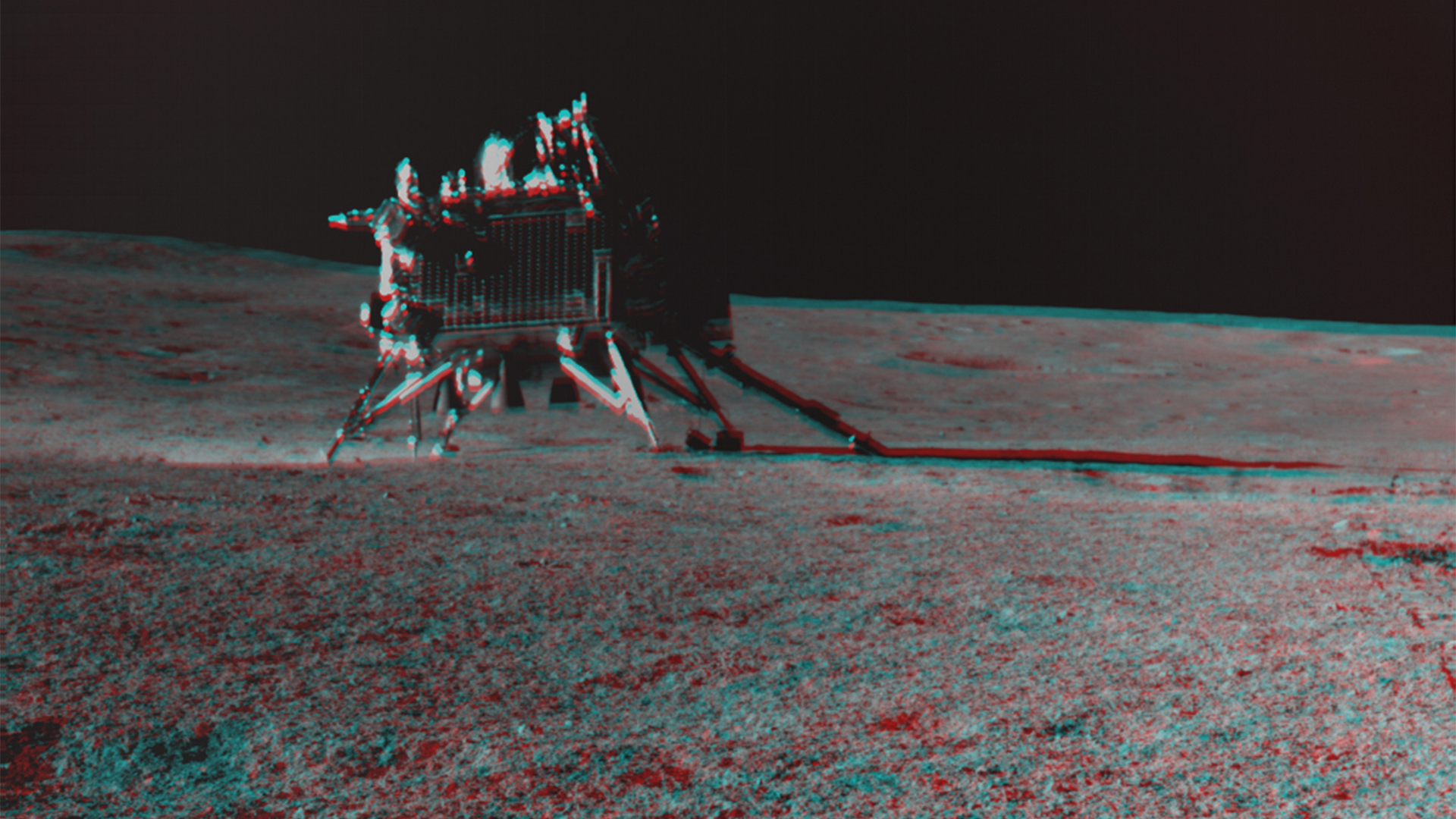After Chandrayaan-3 success, India gearing up for moon sample-return mission
'Hopefully, in the next five to seven years, we will be able to meet this challenge.'

Building on the recent success of its first-ever moon landing, India aims to next pick up samples from the lunar south polar region and return them to Earth.
Early reports suggest that the Indian Space Research Organisation (ISRO), the country's space agency, is planning a lunar sample-return mission known as Chandrayaan-4, which will send a total of four modules to the moon across two launches.
The first step of this complex endeavor would ferry a lander and an "ascender" to the moon's surface to collect samples. This would likely occur near the landing site of the now-dormant Chandrayaan-3 spacecraft near the lunar south pole, a region of much international interest thanks to its apparent abundance of water ice, which scientists think can be mined for life support and rocket fuel.
Related: Chandrayaan-3: A complete guide to India's third mission to the moon
The remaining two pieces of the Chandrayaan-4 mission — a transfer module and a reentry module — would fly later on top of a second rocket but remain parked in lunar orbit, according to media reports.
While the specific mission plan is not yet clear, it appears the lander and ascender would touch down on the rim of an unspecified crater near the south pole. Then, the ascender module carrying the collected samples would launch from the moon's surface and transfer its samples to the reentry module. The transfer and reentry modules would then head back toward Earth, carrying the samples here for a safe touchdown.
"It's a very ambitious mission," Nilesh Desai, director of the Space Application Center in Ahmedabad, which was part of the historic Chandrayaan-3 mission, said on Friday (Nov. 17), according to The Indian Express. "Hopefully, in the next five to seven years, we will be able to meet this challenge."
Breaking space news, the latest updates on rocket launches, skywatching events and more!
India's proposed multi-step mission concept to return moon samples to Earth is somewhat similar to an in-the-works effort by NASA to bring home Martian samples. The NASA project — a joint effort with the European Space agency — aims to launch samples collected by the Perseverance rover using a rocket-powered spacecraft and dock it with an Earth-return orbiter that would be circling Mars.
The Red Planet campaign, currently targeted for the 2030 timeframe, is facing scrutiny for its ballooning costs and unresolved architecture. ISRO has not yet announced the estimated budget for the Chandrayaan-4 mission.
The announcement itself is not a complete surprise, though, as Indian Prime Minister Narendra Modi previously said that "India should now aim for new and ambitious goals." As part of that effort, Modi had directed a government department that manages the country's space program to build a roadmap for the country's moon exploration, including a series of additional robotic Chandrayaan missions.

Sharmila Kuthunur is an independent space journalist based in Bengaluru, India. Her work has also appeared in Scientific American, Science, Astronomy and Live Science, among other publications. She holds a master's degree in journalism from Northeastern University in Boston.
